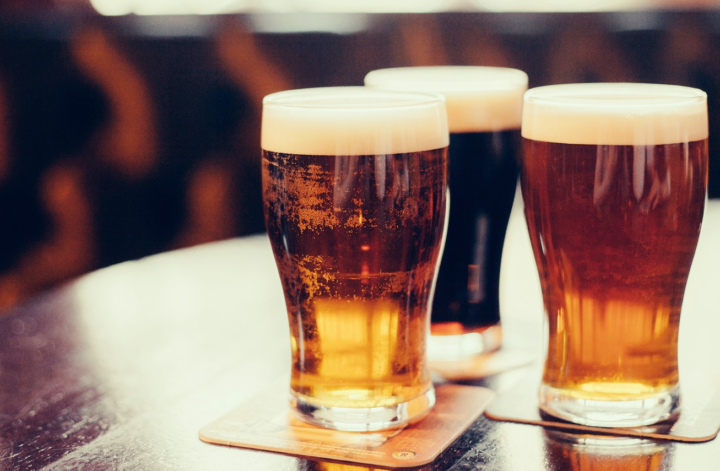Beer is a beloved beverage enjoyed by many around the world. Its production process involves several steps that are crucial to beer’s flavor and quality.
First, beer’s raw ingredients — water, grain (typically barley), hops, and yeast — must be prepared and combined in the right quantities to create beer wort. This liquid mixture is then boiled and hops are added for extra flavor.
The beer wort is then cooled and transferred to a fermentation vessel, where yeast is added. This process converts the sugars present in the beer wort into alcohol. The beer continues fermenting for several days or weeks, depending on its type, before it is strained and filtered to remove the yeast.
Finally, beer is ready to be bottled and shipped. Bottling beer allows it to carbonate naturally, which gives beer its bubbly texture and refreshing taste. Beer is often pasteurized during the bottling process in order to lengthen its shelf life and ensure consistent flavor.
By following these steps carefully and attentively, beer makers are able to craft beer that is both delicious and of the highest quality. The brewing process may be complex, but the resulting beer is certainly worth the effort. So, next time you enjoy a beer, remember all that went into making it – from boiling to bottling – so you can truly appreciate its unique flavor. Cheers!
In beer-bottling operations for small businesses, beer is typically bottled in either bottles or cans. Bottles come in various sizes, such as 12-ounce bottles, 16-ounce bottles, and 32-ounce growlers. Cans come in smaller 8- or 12-ounce sizes. Each container requires its own unique bottling process depending on size and shape.
In beer-bottling operations, beer is typically transferred from a tank or keg into a bottling line. The beer is then filled into containers that have been sanitized prior to bottling. A machine typically flame seals the bottles or cans after they are filled with beer, which prevents beer from leaking out and allows beer to be stored for longer periods of time.
Lastly, labels are printed and attached to the beer containers. Labels can vary in size and shape depending on the beer-bottling operation’s specific needs. Once beer is bottled and labeled, it is typically ready for distribution or sale.
Small beer-bottling businesses are often much more streamlined than larger beer-bottling operations. Small beer-bottling businesses may opt for manual or semi-automatic beer-filling and labeling processes, which can help to lower costs and optimize production time. Automated beer-bottling systems may also be used in small beer-bottling businesses, depending on the size and needs of the beer-bottling operation.
In any case, beer-bottling operations tend to strive for efficiency, cost savings, and product quality in order to remain competitive in the beer market. With careful planning and proper equipment management, small beer-bottling businesses can be successful in bottling beer quickly and safely.
The beer-bottling process may include a few steps, including beer storage and beer transfer, beer filling and beer capping, beer labeling and packaging, as well as quality control inspections. Beer storage is typically handled either by storing in kegs or mashing tanks. Additionally, beer transfer involves transferring beer from the mash tank to the beer transfer tank using tubing or pumps, and then transferring beer from beer transfer tanks to beer filling machines. Beer filling is done by hand or through automated bottling lines. Beer capping seals bottles with either twist-off caps or crowns. Labeling typically utilizes a labeling machine for uniform application of labels on beer bottles. Packaging involves using automated beer packaging systems, which encompass beer trays, beer cases and beer pallets. Quality control inspections are crucial at every stage of the beer bottling process to ensure that beer is free of foreign matter and other contaminants. The quality of beer produced in small businesses depends on a variety of factors such as brewing techniques, ingredients used, water source, beer storage and beer bottling processes. It is important for small business owners to have a comprehensive understanding of beer bottling to ensure that their beer meets the highest standards of quality. By monitoring quality control procedures and investing in advanced beer bottling equipment, small businesses can produce high-quality beer for their customers.


